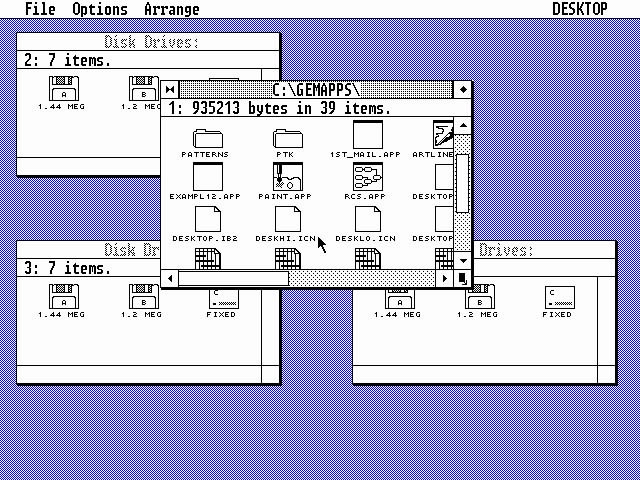| PC-1512 and the Fall of Amstrad |
| Written by Historian | ||||
Page 2 of 3
BIOSAlthough the design of the IBM PC was essentially open there was one software component that probably belonged to IBM – the BIOS. This was a standard set of routines which started the machine up and allowed the software to talk to the hardware. A PC cloner had to have a BIOS that was compatible with the IBM version but they couldn’t just take a BIOS chip out of a real IBM machine and copy it. They couldn’t even write a new BIOS while looking at the old one – this too would have resulted in a lawsuit with IBM. The procedure adopted to legally clone the BIOS was to supply a software team with a specification of what the BIOS does and have them write it without knowledge of how it does it. In Amstrad’s case the BIOS was written by MEJ Electronics, the same small design company that created the PCW’s and CPC’s hardware. Locomotive Software was asked to write the BIOS but declined because it feared that litigation by IBM might wipe them out. This decision more or less ended any future relationship that Locomotive and Amstrad might have had. While MEJ couldn’t be given details of the BIOS code this didn’t preclude Amstrad examining the rest of the hardware. Indeed early in the project Bob Watkins opened up an IBM machine and was deeply shocked by what he found. Unlike Amstrad’s computers the IBM main PCB was crammed with lots of small chips. Amstrad’s approach had been to use large custom chips to reduce the cost and complexity of production. The fact that the IBM design was so conservative was a clear indication that Amstrad could almost certainly produce a much cheaper design. In addition the large chips could be used to build in functions as standard. This again was the “integrate as much as possible” approach that Alan Sugar had exploited in HiFi, home computers, word processors and now desktop computers.
A PC512 Complete with monitor, mouse and keyboard. An operating systemThe hardware is just one side of the story in the building of a computer. Amstrad also needed software to make the machine useful. At the time the standard operating system for the IBM PC was MS-DOS, as produced by the then not-so-big Microsoft which had replaced Digital Research (DR) as the number one supplier of operating systems. When Alan Sugar approached Microsoft for an MS-DOS licence the price quoted wasn’t low enough and this is where DR saw a chance to make up lost ground. Paul Bailey, DR’s European boss, went to see the prototype 1512 and quickly realized that this was an important machine and a real opportunity. Microsoft’s early versions of MS-DOS were substantially based on DR’s CP/M and DR had also developed its own MS-DOS compatible operating system from CP/M – DOS-Plus. Although the two operating systems were substantially the same MS-DOS was the standard that the market recognized and Amstrad represented DR’s last chance at establishing itself as a PC operating system supplier. It offered Alan Sugar an aggressive price for DR-DOS and for their graphical interface GEM, Graphics Environment Manager.
GEMGEM was a Mac-like environment for the PC and it was a workable system long before Windows. GEM held out the promise of making the PC-1512 far more usable than the character based MS-DOS operating system. DR offered GEM at an aggressive price and agreed to customise it to run on the 1512 without the use of a hard disk. Bailey was convinced that DR would sell lot of application software to Amstrad owners and GEM systems to other users as a result of the deal. This was true but not as true as it could have been. Just before the launch of the PC-1512 Microsoft finally woke up to the fact that the PC-1512 would take the European market and it dropped its price. The PC-1512 shipped with both MS-DOS and DR-DOS and many users opted for the security of numbers by installing MS-DOS. However they did opt to run GEM in large enough numbers for Bailey to comment that the launch of the PC-1512 did more for GEM than any other event.
GEM - At the time it was revolutionary |
||||
| Last Updated ( Thursday, 10 October 2019 ) |




